- Home
- Ben Stevens
The Nazi Murder Machine: 13 Portraits in Evil
The Nazi Murder Machine: 13 Portraits in Evil Read online
The Nazi Murder Machine: 13 Portraits in Evil
Ben Stevens
Introduction
The Nazi Murder Machine: 13 Portraits in Evil
Amazon author account
*
Introduction
‘…We are barbarians – pitiless… The world can only be ruled by fear…’
So declared Adolf Hitler, the Fuhrer of Germany. A leader of millions, served by men and women of such appalling savagery, such merciless evil, that they make the words ‘barbarians’ and ‘pitiless’ seem all but redundant.
This book features the collected biographies of thirteen such ‘servants of Hitler’. Included are names almost as infamous as Hitler’s own – Heinrich Himmler, Joseph Goebbels – yet also the cowardly, but wholly sadistic Irma Grese (female guard at the Auschwitz concentration camp, in sole charge of some 30,000 inmates) and Bruno Tesch, one of the owners of the pest-control company Tesch and Stabenow, who amassed a fortune through the sale of the Zyclon-B gas crystals, used in the concentration camp gas chambers, to the Nazis.
For some years, the information contained in this book existed as ‘notes’, collected as part of my extensive research for my novel The Whistler: A Murderer’s Tale.
I dedicate this book to all those who suffered so vilely at the hands of the Nazis, and so that those who read these accounts may also say – ‘Never again’.
Ben Stevens, Nagasaki City, Japan, 2014.
The Nazi Murder Machine: 13 Portraits in Evil
Becker-Freyseng, Hermann
Blobel, Paul
Brandt, Rudolf
Dirlewanger, Oskar (the ‘most evil man in the SS’)
Eichmann, Adolf
Goebbels, Joseph
Göring, Hermann
Grese, Irma
Heydrich, Reinhard
Himmler, Heinrich
Hoess, Rudolf
Mengele, Josef (the ‘Angel of Death’)
Tesch, Bruno
*
Becker-Freyseng, Hermann
Becker-Freyseng, pictured wearing military uniform. Although a physician, he was given the official rank and title of ‘Captain, Medical Service of the Air Force’ by the Nazis.
Becker-Freyseng qualified as a physician at the University of Berlin in 1935 (when he was then aged twenty-five), and rose to prominence when he became a consultant to the Luftwaffe, being recognized as an expert in aviation medicine.
In 1938 he assisted with a series of important experiments concerning the effects of pure oxygen, and soon became a leading figure in the Nazi’s ‘human experimentation program’. (He had already, voluntarily, become a member of the Nazi Party.)
The experiments which took place under Becker-Freyseng’s direction commonly required inmates selected from the Nazi concentration camps. These inmates could be placed in a pressure chamber, where the effects of high altitude flying on the human body would be measured and observed. Others were subjected to freezing temperatures, or deliberately infected with tuberculosis. (This last ‘experiment’ often involved Jewish and gypsy children.)
Other inmates were forced to drink copious amounts of salt-water, with some also having it injected into their veins. All forty of these inmates (whom Heinrich Himmler had personally selected, at the special request of Becker-Freyseng and several other Nazi ‘physicians’) were then subjected to a liver autopsy, while they were still alive and without the use of any anesthetic.
Becker-Freyseng had the results of these hideous salt-water experiments published in a paper entitled Thirst and Thirst Quenching in Emergency Situations at Sea.
Captured by the Allies at the end of the war, Becker-Freyseng was one of the twenty-three Nazi physicians whose cases were heard at the so-called ‘Doctors’ Trial’. Found guilty of war crimes and crimes against humanity, he was subsequently sentenced to twenty years imprisonment. (Of the twenty-three defendants, seven were sentenced to death and the same number acquitted. The others received prison sentences of varying lengths.)
Karl Brandt, Adolf Hitler’s personal physician, is sentenced to death by hanging at the end of the ‘Doctors’ Trial’.
In 1946, however, Becker-Freyseng suddenly found that his punishment had been suspended, in return for his co-operation in assisting the Americans with ‘Operation Paperclip’ – a series of projects relating to space travel. For this, he was required to move to the US.
Diagnosed with multiple sclerosis in 1960, Becker-Freyseng died from this condition the following year, aged fifty-one.
Blobel, Paul
Blobel was born August 13, 1894 in Potsdam, a city bordering the German capital of Berlin. He served in the First World War, with such conspicuous bravery that he was ultimately awarded the Iron Cross.
At the end of the war, he studied architecture, a profession he went on to practice from 1924 – 1931. Upon losing his job, he joined the Nazi Party and the Schutzstaffel (SS). Blobel rose rapidly through the ranks to become Commanding Officer of Sonderkommando 4a, a military unit active in Ukraine.
The Sonderkommando 4a were tasked with following Wehrmacht (‘Defense Force’) troops into Ukraine, where they would subsequently ‘liquidate’ all ‘racial and political’ undesirables.
In August 1941, Blobel ordered the creation of a ghetto in Zhytomyr, a city to the northwest of Ukraine, for 3,000 Jews. All of these Jews were murdered one month later.
Another massacre – of Jewish women and children – occurred at Bila Tserkva, a city in central Ukraine, August 22, 1941.
Blobel then organized the Babi Yar (‘Old Woman’s Ravine’) massacre in Kiev, September 29 – 30, 1941, in which 33,771 people died. Part of what took place was described by one of the twenty-eight known survivors, Soviet-Jewish actress Dina Pronicheva.
She told of how the victims were lined up on a ledge, and shot so that they fell down into the ravine. Pronicheva threw herself down, and there hid among the corpses even as the Germans used flashlights and guns to ‘finish off’ any wounded. Finally, when the Germans began throwing earth over the bodies, Pronicheva somehow managed to crawl out of the ravine undetected and escape.
In November that same year, Blobel took possession of a ‘gas van’ or ‘gas wagon’. As such names suggest, these were basically ‘mobile gas chambers’, with an airtight compartment into which exhaust fumes were transmitted while the vehicle’s engine was running. Death thus occurred by carbon-monoxide poisoning.
A mobile ‘gas van’
Originally invented by the Soviet secret police during the ‘Great Purge’ of the late 1930s, it was ‘adopted’ by the Nazis once Heinrich Himmler had discovered how the Einsatzgruppen (‘task forces’) – paramilitary death-squads such as Blobel’s Sonderkommando 4a – were continually losing members due to the mental trauma caused by shooting innocent men, women and children. Seemingly hardened Nazi soldiers would experience nightmares from which they awoke screaming; there was often no other choice but to have them committed to a sanatorium.
Testified one anonymous member of the Einsatzgruppen:
‘…The interior of the vans were covered with sheet metal and fitted with a wooden grid. The fumes from the exhaust were piped into the interior of the vans. The Jews hammered on the sides, screaming – ‘Please let us out!’...’
Testified Blobel’s driver, following the end of the war:
‘…The back doors of the van were opened, and the bodies unloaded by those Jews who were still alive. These bodies were covered with vomit and excrement. It was an appalling sight. Blobel supervised all of this, and then we drove away. Always he drank alcohol afterwards...’
Alcohol was often used by members of the Einsa
tzgruppen death-squads as a way of ‘blocking out’ the reality of the unspeakable acts they were committing.
Entirely sympathetic with the ‘plight’ of such men, Blobel remarked:
‘…From a purely psychological point of view, my men had a terrible time... The nervous exhaustion of the soldiers carrying out the executions was immense… they suffered far more than those who were being executed…’
Blobel was himself relieved of command of his unit in January 1942, due to his chronic alcoholism. His ‘skills’, however, soon proved too valuable to waste.
Blobel was subsequently tasked with organizing the exhumation of all mass graves in Eastern Europe (so to ‘cover-up’ Nazi atrocities, an operation given the codename ‘Aktion 1005’). Blobel perfected an extremely efficient way of incinerating the corpses – alternating layers of bodies with firewood on a frame of iron rails.
Described one of Blobel’s associates:
‘…There were strange movements of the earth itself. Clumps of earth suddenly blew up into the air… there was smoke; it was almost like some miniature volcano... Blobel laughed, and pointing at all of this said ‘There lie my Jews!...’
Overall, Blobel is believed to have been responsible for some 60,000 killings. Sentenced to hang by a US Military Tribunal at the Nuremberg Einsatzgruppen trials, he met his death June 7, 1951. Entirely unrepentant, Blobel’s last words are reported to have been:
‘…May the German people be aware of its enemies…’
Brandt, Rudolf
Rudolf Brandt, who had what might be termed an important ‘clerical role’ in the Nazi’s so-called ‘Final Solution’ – the proposed, total extermination of the Jewry.
At the start of 1932, the twenty-two-year-old Rudolf Brandt became the 1,331,536th member of the Nazi Party. In October the following year, he joined the SS, ultimately rising to the rank of Standartenfuhrer (Colonel).
Brandt’s exceptional ability at shorthand and transcribing (he averaged around 360 syllables a minute) soon attracted the attention of Reichsfuhrer Heinrich Himmler, who had the tirelessly efficient young man transferred to his staff. Soon, Brant was handling almost all of Himmler’s total correspondence, which led to him having to produce anything up to eighty letters per week.
At the end of the war, one associate of Brandt’s described him thus –
Brandt would begin work at seven in the morning, regardless of whatever time he had gone to bed the previous evening. He only ever needed a maximum of four hours sleep.
Barely had Himmler risen in the morning and washed, when Brandt would go to him carrying a multitude of letters, papers and files. Even while Himmler shaved, Brandt would read him the most important items in that morning’s mail. He always prefaced the telling of bad news by saying, ‘Pardon, Herr Reichsführer’. At this, Himmler would temporarily cease shaving, in case this bad news upset his hand and so caused him to cut himself.
Alternately complaining about being overworked, and then almost bragging about the seniority of his position within Himmler’s personal staff, Brandt was an extremely important individual. It is no exaggeration to say that he served almost as Himmler’s ears and eyes, and it was in the very manner in which he presented news to Himmler that often determined the way Himmler would react to it…
From March through to May of 1941, Brandt saw military action, fighting in Greece as a soldier of the Artillery Regiment of the 1st SS Panzer Division.
But he was soon back at his beloved Himmler’s side, again producing the copious letters which his master dictated – a number of which requested that precisely 87 Jews imprisoned at the Auschwitz concentration camp be used for the proposed ‘Jewish Skeleton Collection’. This would preserve the remains of a group of Jewish Untermensch (‘sub-humans’), after that race had been entirely eradicated, in accordance with the plan known as the ‘Final Solution’.
(Untermensch was a term not just used for the Jews. The Nazis also used it to describe Poles, Slavs, blacks and others whom they considered to be ‘beneath’ them. Following Germany’s military victory, it was proposed that these Untermensch would be used as slave labor for the German Empire, the Third Reich, and would ultimately be worked and starved to death. The Jews, however, were to be exterminated as quickly as possible.)
The cadaver of Berlin dairy merchant Menachem Taffel. He was transported to Auschwitz in March 1943, together with his wife and child who were gassed upon their arrival. Selected as one of the 87 ‘anatomical specimens’ for the proposed ‘Jewish Skeleton Collection’, Taffel was murdered, by gassing, in August 1943. (All but one of the ‘specimens’ were gassed, as it was deemed essential that the body, and especially the head, should not be ‘damaged’ in anyway – for example, by other methods of execution. Only one man was shot, as he began to struggle upon realizing that he was about to be put in a gas chamber.) Note the concentration camp ‘inmate number’, tattooed upon Menachem Taffel’s left forearm.
With his customary, brisk efficiency, Brandt dealt with the correspondence concerning the ‘Jewish Skeleton Collection’ whilst simultaneously attending to the other, more mundane matters which were part-and-parcel of working for Reichsfuhrer Himmler. These might include anything from selecting suitable brides for SS men, to querying an unusually high utilities bill received by his department.
As Germany’s defeat became certain, Brandt went into hiding with Himmler, but ultimately surrendered to a group of British soldiers.
Brandt pictured during the Nuremberg Trials. He remained completely defiant and unrepentant to the end – and a hangman’s noose. His master, Heinrich Himmler, had already committed suicide by biting down on the cyanide capsule a British doctor had been about to discover concealed on his person.
Brandt was tried at Nuremberg. Convicted of war crimes, crimes against humanity, and membership of a criminal organization (the SS), the physically-slight, bespectacled Brandt, the son of an impoverished railway worker, was hanged on June 2, 1948 – his thirty-ninth birthday.
Dirlewanger, Oskar (the ‘most evil man in the SS’)
Oscar Dirlewanger was born September 1895, and served with such bravery during the First World War, as part of the infantry on the Western Front, that he was awarded the Iron Cross. Soon after the end of the First World War, he assisted with the German Revolution of 1918 – 1919.
In 1922, he obtained a degree in political science at Goethe University, Frankfurt. He became a member of the Nazi Party in 1923, and while working at a bank became a violent alcoholic, ultimately imprisoned for raping a fourteen-year-old girl. (Dirlewanger had a predilection for young girls.)
Stated one police report concerning him –
…(He is) violently unpredictable, frequently disposed to erupt into fearsome rages at the slightest provocation… Such rages are exacerbated by his heavy use of alcohol, and other drugs…
Along with the conviction for child molestation (his victim was coincidentally a member of the Bund Deutscher Madel, or the ‘League of German Girls’), he was also found guilty of damaging a military vehicle while under the influence of drugs, and of multiple counts of keeping illegal firearms.
He served two years imprisonment, and upon his release was almost immediately rearrested on similar charges, this time being sent to a concentration camp named Welzheim. This was standard practice at the time for men convicted of sexual offences against children/minors, and Dirlewanger was fortunate to escape being chemically castrated – a ‘treatment’ for pedophiles that was becoming increasingly popular within the Nazi Party.
The pennant of the ‘League of German Girls’. Dirlewanger was arrested for the sexual molestation of one of its members.
Dirlewanger obtained his release by stating that he wished to go and fight in the Spanish Civil War. In this he was wounded three times, and upon his return to Germany successfully campaigned not only to rejoin the Nazi Party, but also to have his doctorate from Goethe University returned. (Both his membership of the Nazi Party, and this doctorate, had b
een stripped from him when he’d been imprisoned.)
So it was that Dirlewanger was given the membership number 1,098,716, shortly before the Second World War broke out. The experienced soldier applied to join the Waffen SS, was accepted and given the rank of Obersturmfuhrer.
He soon set about forming his own SS battalion (which would ultimately become a division), formerly entitled the ‘36th Waffen Grenadier Division’, but more commonly known simply as ‘SS Penal Unit Dirlewanger’.
As the name suggests, this unit was comprised of men who had criminal records. At first, this was merely for such crimes as poaching (Dirlewanger believed that their skills at such things as tracking and shooting would be invaluable against enemy forces), but would later include mental asylum patients, as well as men convicted of such crimes as rape and murder.

 Hostile Genus: An Epic Military Sci-Fi Series (Invasive Species Book 2)
Hostile Genus: An Epic Military Sci-Fi Series (Invasive Species Book 2)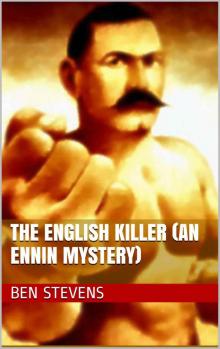 The English Killer (An Ennin Mystery) (The Ennin Mysteries Book 31)
The English Killer (An Ennin Mystery) (The Ennin Mysteries Book 31) The Ennin Mysteries: Collected Series 1 – 5 (25 Stories) MEGAPACK
The Ennin Mysteries: Collected Series 1 – 5 (25 Stories) MEGAPACK Tokyo Zombie Apocalypse
Tokyo Zombie Apocalypse The Strange Case of the Disappearing Dragon (An Ennin Mystery #32)
The Strange Case of the Disappearing Dragon (An Ennin Mystery #32) I, Hell
I, Hell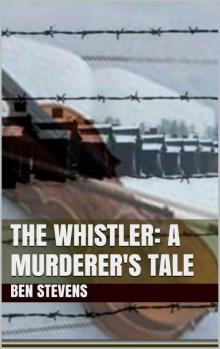 The Whistler: A Murderer's Tale
The Whistler: A Murderer's Tale Parker: The Story of an Apocalypse Survivor: COMPLETE SERIES
Parker: The Story of an Apocalypse Survivor: COMPLETE SERIES Confessions of a Japanese Temple Gardener: (P.S – Who's from London, England)
Confessions of a Japanese Temple Gardener: (P.S – Who's from London, England) A Lesson in Dishonesty
A Lesson in Dishonesty The Sumo Wrestler (An Ennin Mystery #33)
The Sumo Wrestler (An Ennin Mystery #33)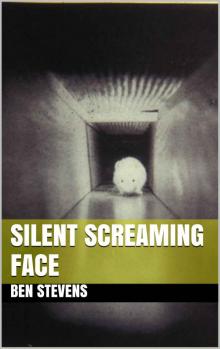 Silent Screaming Face
Silent Screaming Face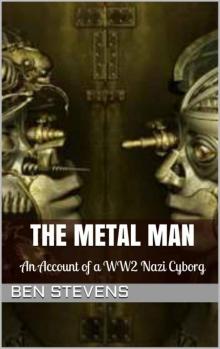 The Metal Man: An Account of a WW2 Nazi Cyborg
The Metal Man: An Account of a WW2 Nazi Cyborg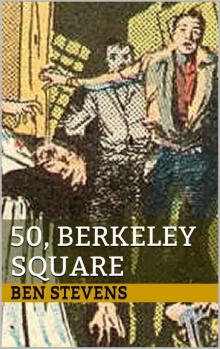 50, Berkeley Square
50, Berkeley Square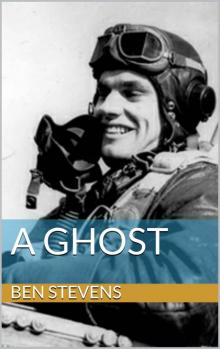 A Ghost
A Ghost The Collected Adventures of Sherlock Holmes in Japan
The Collected Adventures of Sherlock Holmes in Japan The Nazi Murder Machine: 13 Portraits in Evil
The Nazi Murder Machine: 13 Portraits in Evil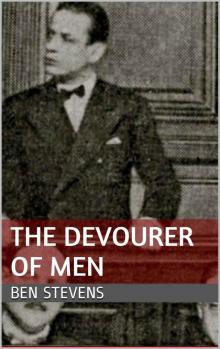 The Devourer of Men
The Devourer of Men Metal Man
Metal Man The Egyptian Tomb Raider (An Ennin Mystery #34)
The Egyptian Tomb Raider (An Ennin Mystery #34) Big Sound Temple
Big Sound Temple The Ennin Mysteries: Collected Stories 26-30
The Ennin Mysteries: Collected Stories 26-30